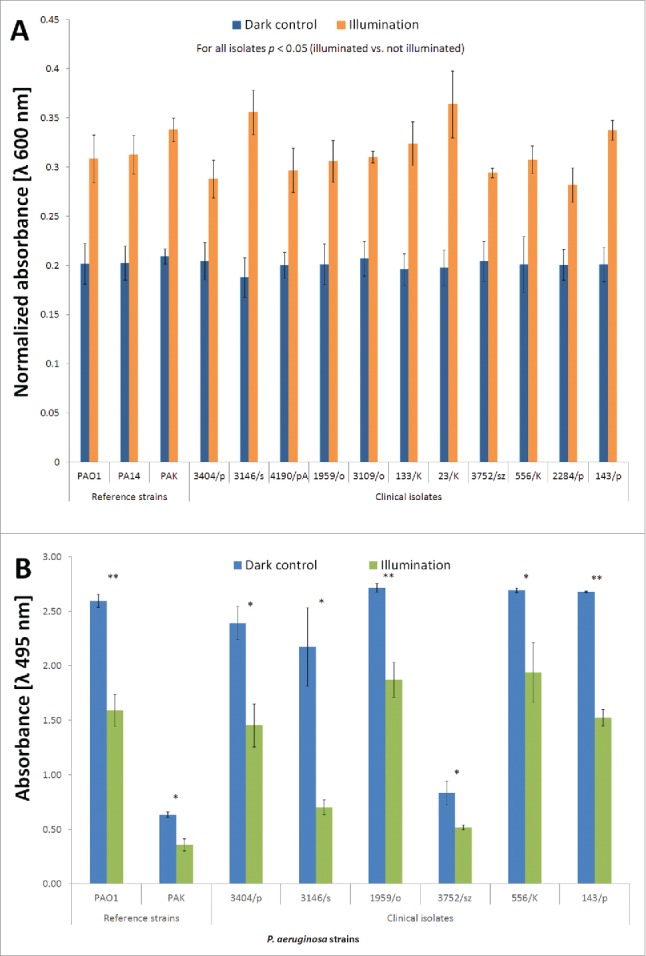Figure 3.

Elastase activity during BLT. (A) Elastase (A)activity during BLT. The staphylolysin activity of elastase A was determined using a reference heat-inactivated S. aureus Newman strain treated with P. aeruginosa extracellular fractions (“dark control:” kept in the dark; “illumination:” BLT; fluence 50 J/cm2; 15.7 mW/cm2; λ 405 nm; duration of irradiation: 3184 sec), and OD600 values were measured every 5 min during incubation (37°C). The figure represents the time at which the dark control supernatants reached 80% of maximum elastolytic activity. The values are the means of 3 separate experiments (the assay was performed for 3 independent experiments with one repetition per sample), and the bars represent the SE. The maximum value of absorbance was set as 1, and all other measurements were normalized as a ratio of 1. (B) Elastase (B)activity during BLT. The pseudolysin activity of elastase B was analyzed by performing and ECR assay. The reaction buffer containing ECR was treated with P. aeruginosa extracellular fractions (“dark control:” kept in the dark; “illumination:” BLT; fluence 50 J/cm2; 15.7 mW/cm2; λ 405 nm; duration of irradiation: 3184 sec), and Congo Red release was quantified by measuring the absorbance at 495 nm, which is indicative of elastase B activity. The values are the means of 3 separate experiments (the assay was performed for 3 independent experiments with one repetition per sample), and the bars represent the SE. The test was performed for the elastase B-producing strains PAO1 and PAK (reference strains) as well as 1959/o, 3146/s, 3404/p, 3752/sz, 556/K, and 143/p (clinical isolates). *P < 0.05, **P < 0.01 (dark control vs. illumination).
